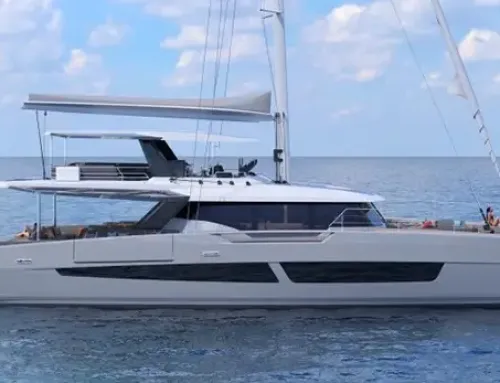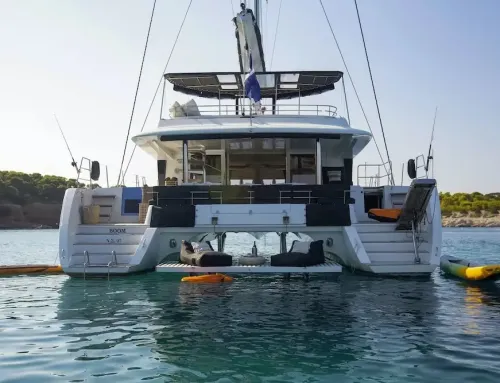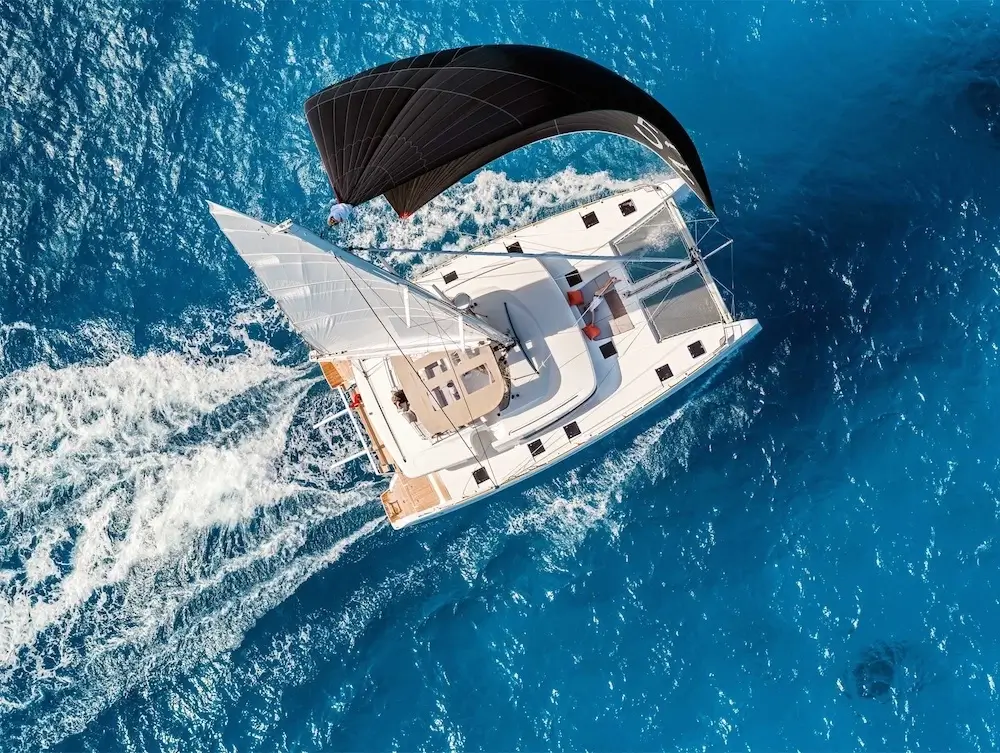
Can Catamarans Handle Big Waves?
The catamaran, with its distinct dual-hulled structure, has become a popular choice among sailing enthusiasts. Often seen gliding gracefully across serene waters, they present an image of stability and luxury. But the real test of a vessel’s capabilities lies in how it fares when the ocean shows its untamed side with big, challenging waves. This article dives into the nitty-gritty of catamarans and their ability to confront the might of the ocean.
Understanding Catamaran Design
The Dual-Hull Advantage
Before addressing the core question of handling big waves, it’s crucial to understand the catamaran’s design. The two parallel hulls offer a wider base, which translates into greater lateral stability on the water.
Innovation in Naval Architecture
Catamaran design has evolved over the years, incorporating advances in naval architecture. This has resulted in designs that not only enhance stability but also improve wave-handling capabilities.
The Science Behind Catamarans and Waves
Displacement and Buoyancy
One of the key factors in a catamaran’s ability to handle big waves is the concept of displacement and buoyancy. Catamarans are generally designed to have a low displacement, which allows them to ‘ride’ the waves more effectively.
Hull Shape and Dynamics
The hull shape of a catamaran is another critical element. With narrower hulls and a fine entry into the water, catamarans can cut through waves, reducing the impact of big swells.
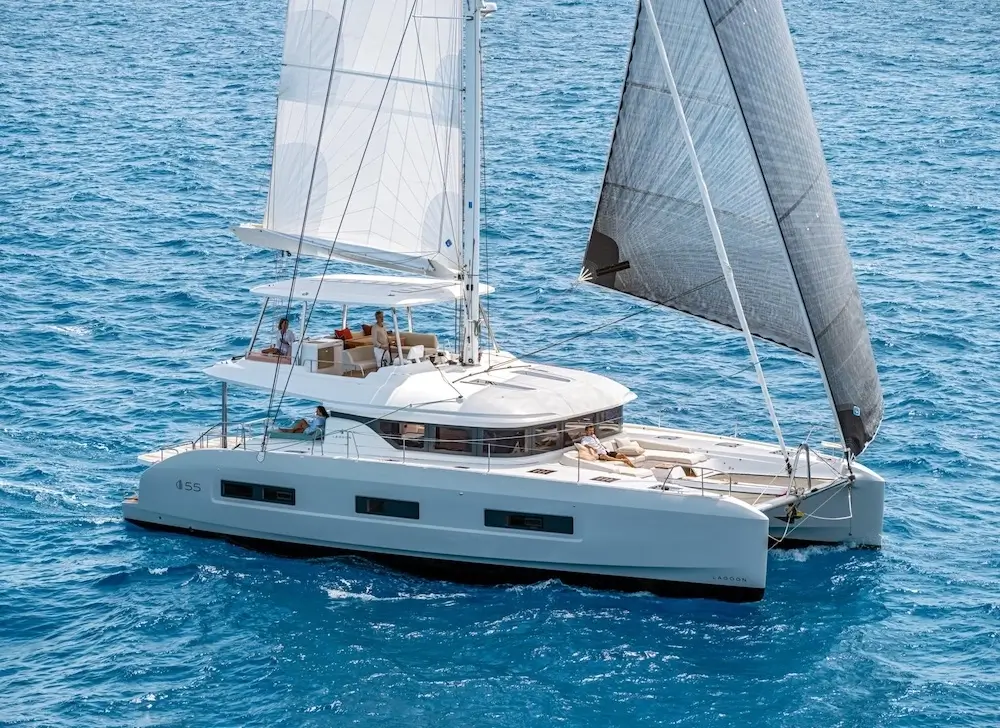
Can Catamarans Handle Big Waves 2
Catamarans in Action: Confronting Swells
The Power of the Beam
A catamaran’s wide beam plays a pivotal role in its performance in rough seas. This width provides additional resistance against rolling, which is induced by wave action.
Handling Techniques
Experienced skippers have developed specific handling techniques to navigate big waves in a catamaran. These include adjusting the angle of approach and speed to minimize discomfort and maintain control.
Historical Perspectives on Catamarans and Rough Seas
Accounts from the High Seas
Historical accounts and modern-day experiences from sailors illustrate how catamarans have handled challenging sea conditions. Many of these stories highlight the vessels’ surprising resilience.
Comparative Incidences
When comparing incident reports, catamarans have a track record that suggests they can handle adverse conditions, though not without caution and skill from the crew.
The Role of Modern Technology in Catamaran Safety
Advances in Material Science
Modern catamarans benefit from advances in materials that enhance their structural integrity and ability to withstand the force of waves.
Navigation and Weather Forecasting
Technological tools for navigation and weather forecasting have significantly improved the safety of sailing in rough conditions. Skippers can now plan and adjust their journey with real-time data.
Catamarans vs. Monohulls: A Safety Debate
The Stability-Seaworthiness Paradigm
In the debate between catamarans and monohulls, stability and seaworthiness are often weighed against each other. Each design offers distinct advantages that can be harnessed for safe sailing.
Structural Comparisons
Structurally, catamarans have certain features that can make them preferable in big waves, such as reduced heeling and the absence of a keel to catch the water.
Preparing a Catamaran for Big Waves
Essential Safety Checks
Preparation is key to ensuring a catamaran can take on big waves. This includes thorough safety checks and ensuring all equipment is in optimal condition.
Crew Readiness
The readiness of the crew, both physically and mentally, is just as important. Training, experience, and a clear understanding of the vessel’s handling are crucial.
The Role of the Skipper in Wave Management
Decision-Making at Sea
The skipper’s decisions can mean the difference between a safe passage and a perilous situation. Knowing when to tackle a wave head-on or when to seek shelter is a critical skill.
Mastery of Maneuvers
Mastering catamaran-specific maneuvers that mitigate the risks associated with big waves is part of a skipper’s expertise.
Catamarans in Various Sea Conditions
Performance in Different Seas
A catamaran’s performance can vary significantly depending on the sea state. Calm conditions versus turbulent seas can result in vastly different handling experiences.
The Catamaran Charter Experience
For those considering a yacht charter Croatia, understanding how these vessels handle big waves is particularly relevant. Charter companies often provide skippers who are well-versed in local conditions and catamaran handling.
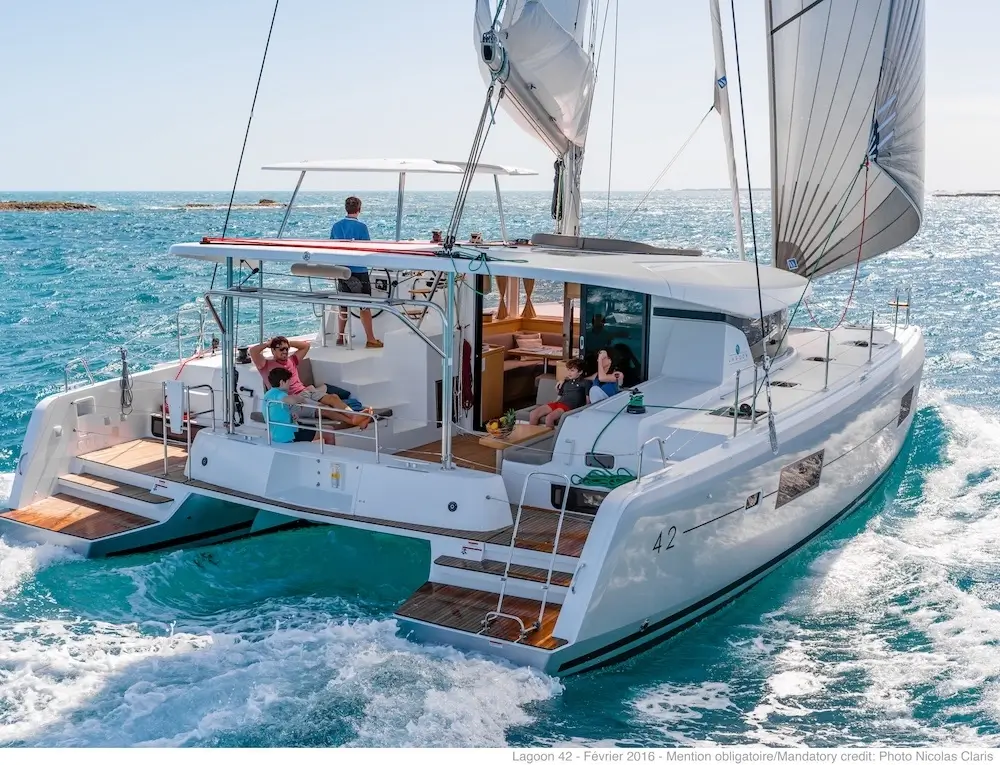
Can Catamarans Handle Big Waves 3
The Future of Catamarans and Ocean Safety
Design Trends
Future catamaran designs are likely to continue to prioritize safety and wave-handling. The feedback loop between user experience and design innovation is ongoing.
Sustainability and Safety
As sustainability becomes increasingly important, eco-friendly materials and designs may also enhance the safety and resilience.
Enhancing Catamaran Safety Through Design and Technology
Advanced Hull Designs
Emerging trends in hull design aim to improve the wave-piercing capabilities of catamarans, which is crucial for tackling large waves. These designs help reduce slamming and provide a smoother ride.
Breakthroughs in Stabilization
Active and passive stabilization systems are being integrated into catamarans to maintain comfort and safety in rough waters. These systems can automatically adjust to wave action, keeping the vessel level and stable.
Training and Preparedness: Keys to Handling Big Waves
Importance of Skipper Training
Comprehensive skipper training programs, which include handling catamarans in rough seas, are vital. A skilled skipper can utilize the catamaran’s strengths to navigate through big waves.
Safety Drills and Procedures
Regular safety drills and a clear understanding of emergency procedures among the crew can increase the chances of safe voyaging in harsh conditions.
The Psychological Aspect of Sailing in Rough Seas
The Confidence Factor
Confidence in the vessel’s abilities and one’s own skills can greatly affect performance in rough seas. A positive mindset and trust in the catamaran’s capabilities are essential.
Managing Fear and Stress
It’s natural to experience fear and stress when facing big waves. Effective crew leadership and maintaining calm are critical for safety and decision-making.
Personal Experiences: Sailors’ Tales of Big Waves and Catamarans
Testimonials of Resilience
Sailors’ stories often feature catamarans withstanding formidable waves, highlighting the resilience of these vessels when properly managed.
Lessons Learned
Incidents where catamarans have faced rough seas provide valuable lessons for manufacturers, skippers, and the sailing community, driving improvements in safety practices.
Selecting the Right Catamaran for Wave Conditions
Assessing the Vessel’s Capabilities
When selecting a catamaran, it’s important to assess its design with respect to the specific wave conditions it will encounter. This involves understanding the vessel’s limitations and strengths.
Consultation with Experts
Potential charterers and buyers should consult with naval architects or experienced sailors to understand which catamaran models are best suited for their intended use, especially when considering voyages in areas known for big waves.
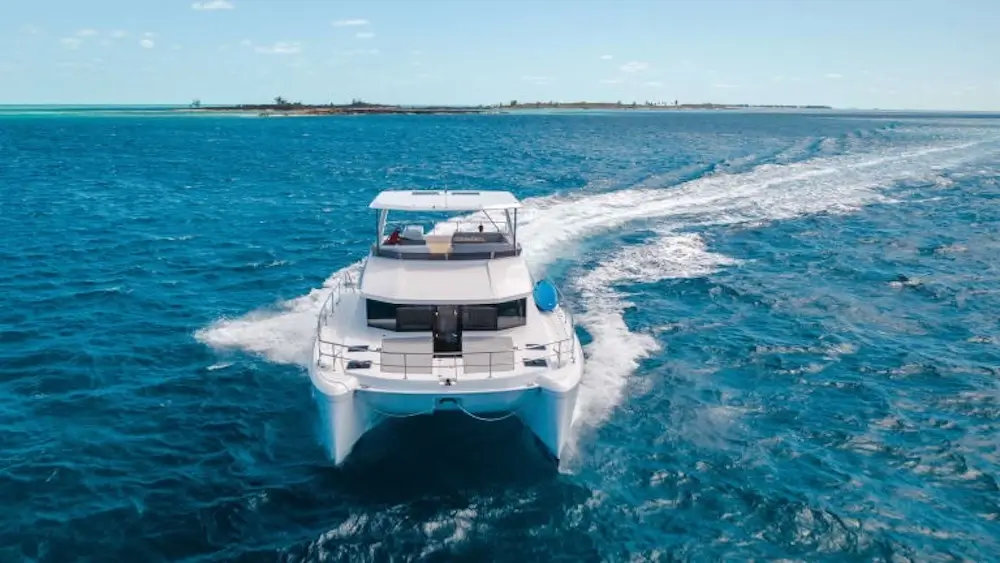
Can Catamarans Handle Big Waves 4
Preparing Your Catamaran for a Safe Journey
Essential Gear and Upgrades
Outfitting a catamaran with essential safety gear and considering upgrades that enhance seaworthiness can make a significant difference in handling big waves.
Maintenance and Inspections
Regular maintenance and thorough inspections are critical, especially for the hull, rigging, and safety equipment. Ensuring that everything is in top condition can prevent mishaps in rough seas.
A Glimpse into Catamaran Charters and Big Wave Sailing
Choosing the Right Charter Company
When planning a catamaran charters, choose a company that prioritizes safety and provides experienced skippers, especially if you’re likely to encounter big waves.
Understanding Charter Itineraries
Familiarize yourself with the charter itinerary and consult with the charter company about alternative routes in case of rough sea forecasts. Being flexible with your sailing plans can increase safety.
Balancing Adventure and Safety on the High Seas
The Thrill of Sailing
Sailing a catamaran in big waves can be an exhilarating experience, offering a blend of adventure and the thrill of mastering the elements.
Ensuring a Safe Return
However, the primary goal should always be to ensure the safety of all on board. This balance is what makes a successful and memorable sailing experience.
Conclusion: The Seaworthiness of Catamarans
Catamarans: Built for the Challenge
The evidence points to catamarans being well-equipped to handle big waves, thanks to their design, technological advancements, and the expertise of those who navigate them.
Continuous Learning and Adaptation
The key to their successful handling of rough seas lies in continuous learning, adaptation, and respect for the power of nature.
Concluding Insights on Catamaran Safety in Big Waves
Navigating the vastness of the ocean, especially when faced with formidable waves, can be as much about the sailor’s expertise as it is about the vessel’s design and capabilities. As we’ve seen, catamarans bring unique characteristics that can be advantageous in rough seas, provided they are maneuvered with skill and knowledge.
Comprehensive Safety: Beyond Design
Safety is Multifaceted
While catamarans are designed with safety in mind, true seaworthiness comes from a combination of good design, proper equipment, thorough training, and experienced handling.
Importance of a Well-Equipped Catamaran
Ensuring that a catamaran is well-equipped with the latest navigation and safety equipment can turn a potentially dangerous situation into a manageable one.
Building on Experience and Knowledge
Learning from Every Voyage
Each journey contributes to a sailor’s experience, and every challenging condition faced at sea is an opportunity to learn and grow in the art of sailing.
Sharing Knowledge for Safer Seas
The sailing community continues to benefit from shared experiences, where lessons learned at sea contribute to the collective safety and knowledge base.
The Role of Weather Forecasting
Staying Ahead of the Weather
Modern weather forecasting plays a critical role in sailing. Staying informed about weather conditions can help sailors avoid the worst of the sea’s wrath.
Technology as a Crucial Tool
With advances in technology, sailors can now access real-time weather data, helping to make informed decisions when navigating big waves.
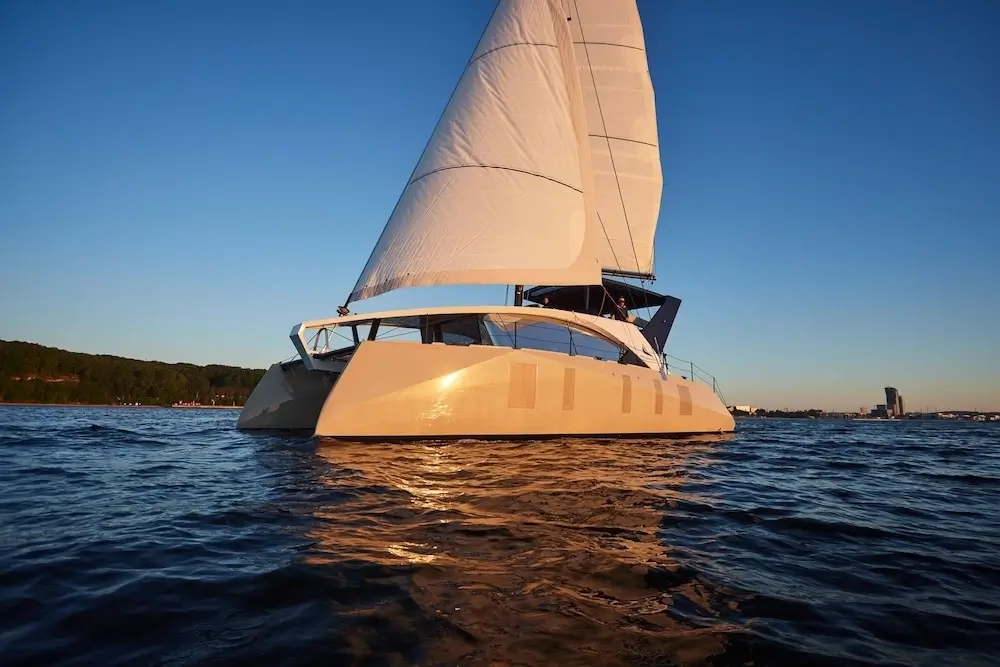
Can Catamarans Handle Big Waves 5
The Human Element: Decision Making in Rough Waters
The Skipper’s Role
The skipper’s decisions are crucial, especially in rough sea conditions. A seasoned skipper can read the waves, wind, and weather, making pivotal choices that prioritize safety.
Crew Readiness and Morale
The readiness of the crew and their ability to work as a cohesive unit can greatly affect the outcome of sailing in challenging conditions.
Final Thoughts on Catamarans in Big Waves
A Balanced Perspective
It’s clear that catamarans are capable of handling big waves, but they are not invincible. Respect for the sea’s power, coupled with prudent sailing practices, is always necessary.
The Verdict on Safety
With the right conditions, preparation, and handling, catamarans can indeed be safe and enjoyable vessels for facing the challenges posed by big waves.
Conclusion: Embracing the Waves with Confidence and Caution
Catamarans, with their dual-hulled stability and space, offer a distinct sailing experience that can combine safety with pleasure, even in the face of rough seas. While no craft is impervious to the forces of nature, a well-designed and skillfully piloted catamaran stands as a testament to human ingenuity and the spirit of maritime adventure.
Sailors must always weigh the thrill of the journey against the unyielding realities of the sea. The wisdom to navigate safely through big waves comes from a blend of respect for the ocean’s might, confidence in one’s vessel and abilities, and the continual pursuit of knowledge.
Whether you’re charting a course through the crystalline waters of the Adriatic or facing the unpredictable swells of the open ocean, a catamaran can carry you through—provided you carry with you the wisdom of the sea.

